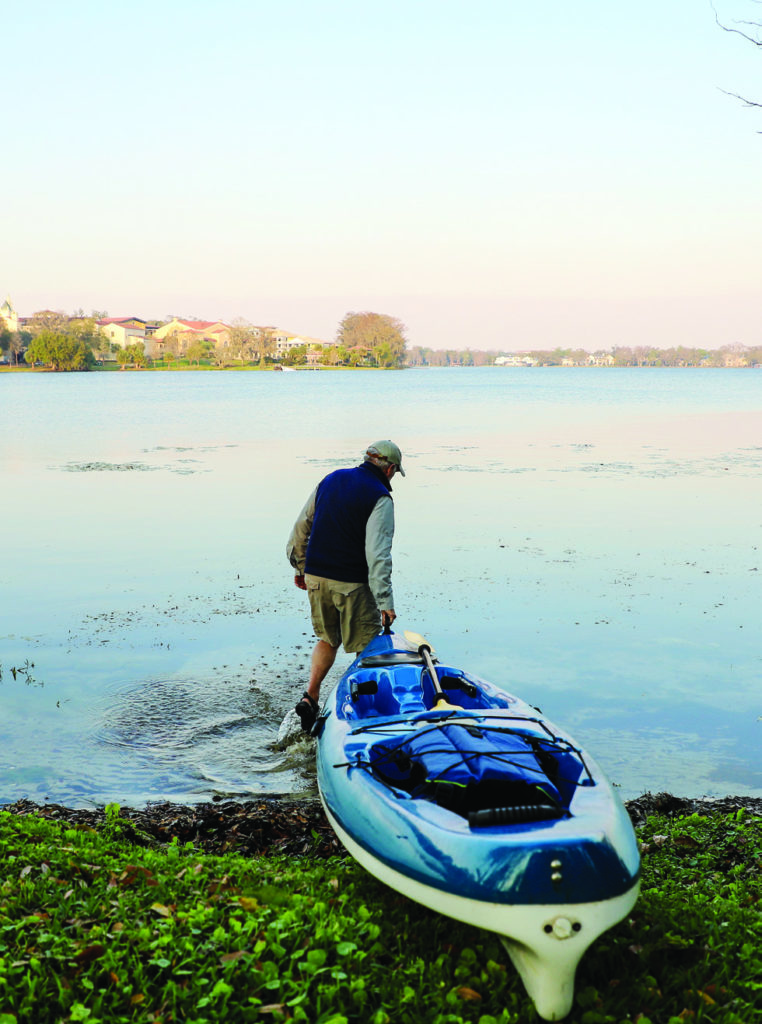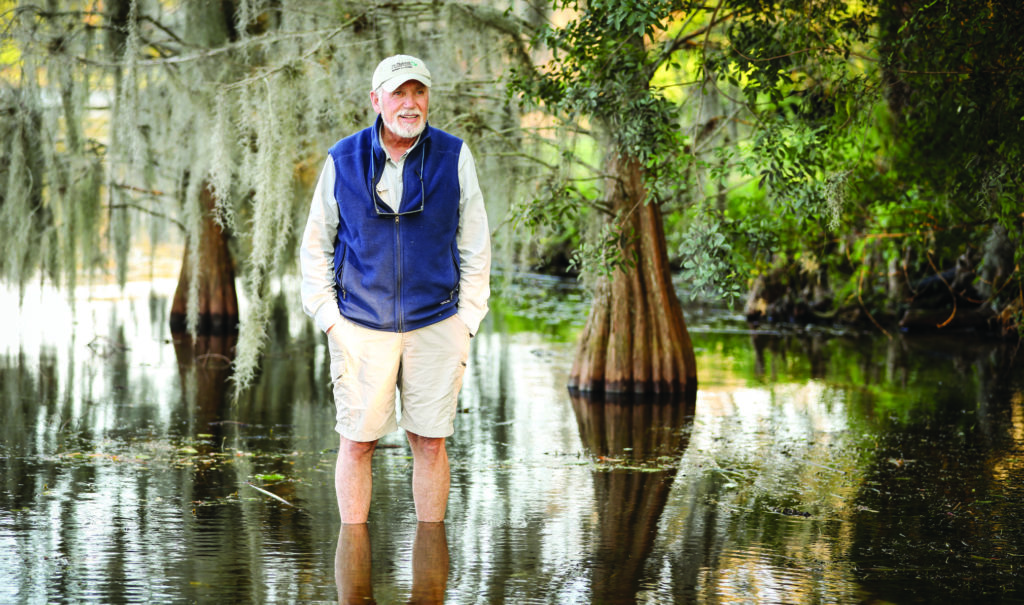By: Leslie Kemp Poole
Saving, protecting and restoring natural areas is Bob Bendick’s passion — and his life’s work. Now, at 73, Bendick is leading one of the most challenging efforts of his 40-year career: working with state and local governments abutting the Gulf of Mexico, and with federal agencies, to use funds from the worst oil spill in U.S. history to rebuild the fragile coastal ecosystem.
The BP Deepwater Horizon explosion and oil spill in 2010 off the coast of Louisiana killed 11 people and poured more than 3 million gallons of oil into the Gulf. Litigation resulted in a $20-billion settlement for damages, of which at least $16 billion was designated for environmental restoration.
Enter Bendick. As director of the Gulf of Mexico Program for The Nature Conservancy (TNC), an international nonprofit environmental group, Bendick is charged with tasks that include supporting restoration work, supervising scientific studies and developing relationships with environmental groups as well as with state and federal governments. For six years, he has traveled through five states on the Gulf Coast, trying to guide different restoration efforts stemming from the settlement.
“There is a lot of exciting work to be done,” said Bendick in his genial, soft-spoken but determined manner. “With the Deepwater Horizon settlement, there is a real opportunity to show how real work can be done on the ground and to show how conservation can be done in the Gulf. This is an opportunity to move things in a different direction in one of the nation’s most important ecosystems.”
And one of its most troubled.

The Gulf, once rich with marine life, has been damaged by the oil spill but also by long-term human impacts, which include overfishing, dredging and pollution. Perhaps the best example is the “dead zone” at the mouth of the Mississippi River — a lifeless, depleted section of the Gulf that’s the size of New Jersey as a result of agricultural pollution flowing down the river. Other problems include eroding shorelines, disappearing seagrass and diminished shellfish beds. Now the oil spill funds are sparking hopes that some of that decline can be reversed.
“The TNC’s Gulf of Mexico initiative shows an astute understanding of the intertwined economic, social and ecological value of one of the world’s most vital estuarine environments,” said Dr. Jack E. Davis, an environmental historian and Pulitzer Prize-winning author of “The Gulf: The Making of An American Sea.” He added, “Equally astute is drawing on Bob Bendick’s experience and skills to head up the initiative. The Gulf will benefit, which means we will benefit.”
One project Bendick touts is an oyster restoration program that TNC supports. Oysters, once “a cornerstone of the Gulf ecosystem,” have become a “disaster” in the Gulf, Bendick said. Oyster reefs once were found across the Gulf’s bays and estuaries where they served as a habitat for fish, crabs and shrimp while also filtering water and stemming coastal erosion. The TNC estimates that 85% of the original reefs are gone, which affects the Gulf’s health and has dramatically decreased the once productive commercial oyster fishery.
Using science, and working with stakeholders in the commercial oyster industry, TNC is leading efforts to build artificial reefs of stone and concrete to which oysters can attach and grow. Half Moon Reef in Matagorda Bay, Texas, some seven years in the works, is now covered with oysters, a smiling Bendick reported. In summer 2020, a similar project will begin in Pensacola Bay, Florida.
Creating jobs for residents of coastal areas is part of the agenda as well. GulfCorps was developed by TNC with a $7 million grant from the National Oceanic and Atmospheric Administration (NOAA) to provide jobs for hundreds of area youth, ages 18-24, who may come from disadvantaged or minority populations. This year, 11 crews of young people are working in the Gulf states in marsh and wetland restoration, in prescribed fire in coastal forests and in invasive species removal.

“It’s exciting to see them work,” Bendick said, adding that the youths are getting high-level training that can prepare them for careers in restoration.
After 20 years at TNC, during which he held numerous management roles, Bendick could be hanging up his hat; but the opportunity to make a difference keeps him motivated.
“If I didn’t feel that I was physically or mentally able to do this, I wouldn’t do it,” he said. “At this point I think my very broad experience in conservation is valuable.”
TNC Southern Division Director Michael Lipford said, “Bob represents the best of the Conservancy in the way he lives our values and the integrity he demonstrates daily in the conservation of our lands and waters along the Gulf Coast. His wisdom gained in working in many roles of public service across the country serves both the local communities and the restoration of the Gulf of Mexico very well.”














